Description
Osmo Door Oil is ideal for protecting interior doors made of solid wood and Oak veneered doors. It comes in a Clear Satin or Raw Finish. It is a clear or transparent wood finish that uniquely combines the advantages of natural oils and waxes in one product. Osmo Door Oil is resistant to dirt, water and abrasion and smoothens the surface. It offers simple application with no primer or sanding between coats needed, this saves time and money. It is suitable for wood, the micro-porous surface will not crack, peel, flake or blister. It is resistant to wine, beer, cola, coffee, tea, fruit juice, milk and water acc. German DIN 68861-1C – no water spots. The dry finish is safe for humans, animals and plants (resistant to saliva and perspiration acc. German DIN 53160, suitable for children‘s toys acc. EN 71.3). Osmo Door Oil is ideal for the protection of solid and some selected veneered wood interior doors (please consult door manufacturers’ recommendations). It is based on natural plant oils (sunflower oil, soybean oil, thistle oil) and waxes, paraffin, siccatives (drying agents) and water- repellent additives.
How to use Osmo Door Oil
Cleaning and Maintenance
Product Video
Please Note
Questions and Answers
Health and Safety
Safety Data Sheets
How to use Osmo Door Oil
- The wood surface must be clean, dry and frost-free (moisture content max. 18%).
- Osmo Door Oil is ready to use. Do not thin.
- Shake well before use.
- Clean old micro-porous stains thoroughly.
- Old paints, varnishes and lacquers must be completely removed.
- Always wear a dust mask while sanding. Fill small cracks, larger joints or holes with a Wood Filler.
- Sand wood surfaces carefully.
- Begin with coarse sandpaper – final sanding P120-150 for solid wood doors.
- Before oiling the surface, remove sanding dust with a broom or vacuum.
- If possible, please apply the first coat to all sides before installation.
- Apply with Osmo Flat Brush and apply thinly and evenly to the clean and dry wood along the wood grain and spread well.
- Allow for good ventilation while drying.
- After drying, apply a second coat – also thinly.
- Clean tools using Osmo Brush Cleaner (free of aromatic compounds).
Cleaning and Maintenance
Once your surfaces have been treated with Osmo door Oil, it is recommended to use the surface as little as possible for around 1 week to fully cure. It is not recommended to regular household cleaners as they are not designed to clean oiled wooden surfaces and can damage them over time. For regular daily cleaning, it is recommended to use Osmo Spray Cleaner as this will clean your wooden doors without removing any oils and waxes, so will not dry the wood out. This will also remove many minor marks. It is also recommended to dust on a regular basis using a plain lint free cloth. If you accidentally scratch or damage the finish, you can either lightly sand the affected area and re-apply the same door oil shade that you originally used. For lighter marks or scuffs, this can usually be cleaned by using Osmo Liquid Wax Cleaner.
Product Video
Please note
- The drying time is approximately 24 hours (normal climatic conditions, 23 °C/50 % rel. humidity).
- Ventilate well while drying.
- Lower temperatures and/or higher air humidity may increase drying times.
- The coverage for 1 coat is 24 m²/1 l. It depends significantly on the character of the wood. All information refers to smooth and planed/cut surfaces. Other surfaces may lead to deviations in coverage.
- Applying the product too generously and insufficient ventilation lead to delays in drying time.
- Oils enhance the natural tone of wood.
- Osmo Door Oil 3060 offers a permanent wet-look-effect.
- 3033 Raw counteracts exactly this effect and protects wood almost invisibly. The original look of the wood can be kept – no emphasising of the natural colour of the wood (no wet-look-effect).
- On dark/reddish wood species the Door Oil 3033 Raw can be seen as a faintly white surface.
- A trial application is recommended.
- Storage: 5 years and longer if stored in the closed original can. If thickened by frost, store at room temperature for 24 hours prior to use.
- Dispose of leftover product and completely emptied packaging according to local official guidelines (waste code number 08 01 12). Only completely emptied cans can be recycled.
Questions and Answers
What are the benefits of Osmo Door Oil?
● ULTIMATE WOOD PRESERVER – Keep your interior wooden and veneered doors and joinery looking beautiful and protected with Osmo Door Oil. This clear satin door oil or Raw Matt Door oil, enhances the natural character of the wood, resulting in a warm and rich colour that adds a touch of elegance and charm to your living space.
● LONG-LASTING PROTECTION – A high solid wax oil for wood that’s extremely durable and hard wearing. The high-quality wood oil is resistant to liquids such as water, juice, tea, cola and wine, while offering lasting protection against scratches, and scuffs.
● VERSATILE USAGE – This door oil is perfect for various wood surfaces such as doors, frames, and joinery. It offers excellent coverage of approx. 24㎡/L with one coat and has a microporous, breathable finish that doesn’t crack, peel or flake.
● NATURAL FORMULA – Formulated from vegetable oils and waxes, Osmo Door Oil is safe to use while offering long-term wood protection. Osmo oil for veneered and solid doors resists saliva and sweat and is suitable for children’s toys. Available in raw and clear satin.
● EASY WOOD APPLICATION – Prepare wood by stripping old finishes and filling imperfections. Sand, wipe and apply thinly and evenly to the clean and dry wood along the wood grain and spread well. Dry for 12-24 hours, then thinly apply the second coat.
What will remove Osmo Door Oil runs?
The door oil is designed to soak into the wood but if you leave a lot of excess oil on application, this can dry with runs. It is always best to wipe away any excess oil using a lint free cloth during application. To remove the runs that have dried onto the wood, it can sometimes be difficult without sanding back to the bare wood but there are a couple of things you can try. First try to lightly sand the area with fine sanding paper back to a smooth finish. Then re-coat with the door oil again in the affected area. You can also try to remove runs using Osmo Brush Cleaner and Thiner. Wipe over the wood surface to remove as much as the run as possible. Once dry, you will have to lightly sand the wood and then re-oil.
Can you use Osmo door oil 3060 on oak veneer doors?
Yes, Osmo Door Oil 3060 has been specially designed for use on Oak veneered doors. This oil has very low solvents in the ingredients so it will not affect the glue under the veneer unlike many other wood oils. This low solvent door oil reduces the risk of damaging the veneer upon application.
How many doors would a 1 Litre tin of Osmo Door Oil do?
A 1 litre tin will cover approximately 24 m square with one coat. It is recommended to allow 2 m square per side on a door and two coats per side of oil. So in total you will need to use approximately 8 m square per door. This means a 1 litre tine will complete approximately 3 doors in total with two coats of oil on both sides. This is a very approximate guide as the second coat is usually a lot thinner application so quite often a 1 litre tin will actually complete 4 doors but it depends on how dry your wood is to how well the oil soaks into the wood.
How many coats of Osmo Oil are needed for doors?
It is always best to apply two coats of door oil. Apply the first using a flat brush as this will add a good coat of oil to protect the timber. Apply the second coat very thinly using an easy pad or lint free cloth as this will finish with a nice smooth coat. It is best to always apply the oil in the direction of the grain.
Where can I buy Osmo Door Oil?
Here at Priory Polishes we have a large selection of Osmo oils for sale including door oil available on our website priorypolishes.co.uk. We also stock this in our shop in Clitheroe, Lancashrie along with many other wood finishing oils and waxes. We are one of the few retailers who have an Osmo mixing machine, so we can tint any shade onsite and can offer fast, fully tracked postage around the UK on a daily basis.
Can this oil be used on previously waxed wooden doors to refresh surface?
If your doors have had a wax finish applied in the past, then you can not apply the door oil on top as it will not penetrate into the wood correctly. This can lead to a patchy finish and can react with the wax finish. To use the door oil, you would have to remove any previous finish back to the bare wood before applying. If you just want to refresh an existing wax finish, then we do offer a large selection of Wood Wax and we find the Fiddes Supreme Wax is a very good product to do this.
Is it best to oil doors before or after they have been hung ?
If possible it would be best to oil your doors before they have been hung. This is because you can apply the door oil laid down flat and this will ensure a more even finish with no drips. You can still treat the doors whilst hung, you just need to ensure you wipe away any excess oil after application with a clean lint free cloth. Always apply thinly and evenly to achieve the best finish.
Customer Examples:
Health and safety
Keep out of reach of children. Do not get in eyes, on skin, or on clothing. If medical advice is needed, have product container or label at hand. Use only outdoors or in a well-ventilated area. Warning: Wash out any used cloth impregnated with this product immediately after use or store in an airtight container (danger of self-ignition). The dried finish is classified as B2 (normal flammability) according to DIN 4102 regulations. This product contains max. 400 g/l VOC. Detailed declaration of ingredients available upon request. Technical Data: Specific gravity: 0.90-1.3 g/cm³ Viscosity: >70s DIN EN ISO 2431/3 mm, viscid Odour: faint/mild, odourless after drying Flashpoint: > 61 °C, acc.
Safety Data Sheets

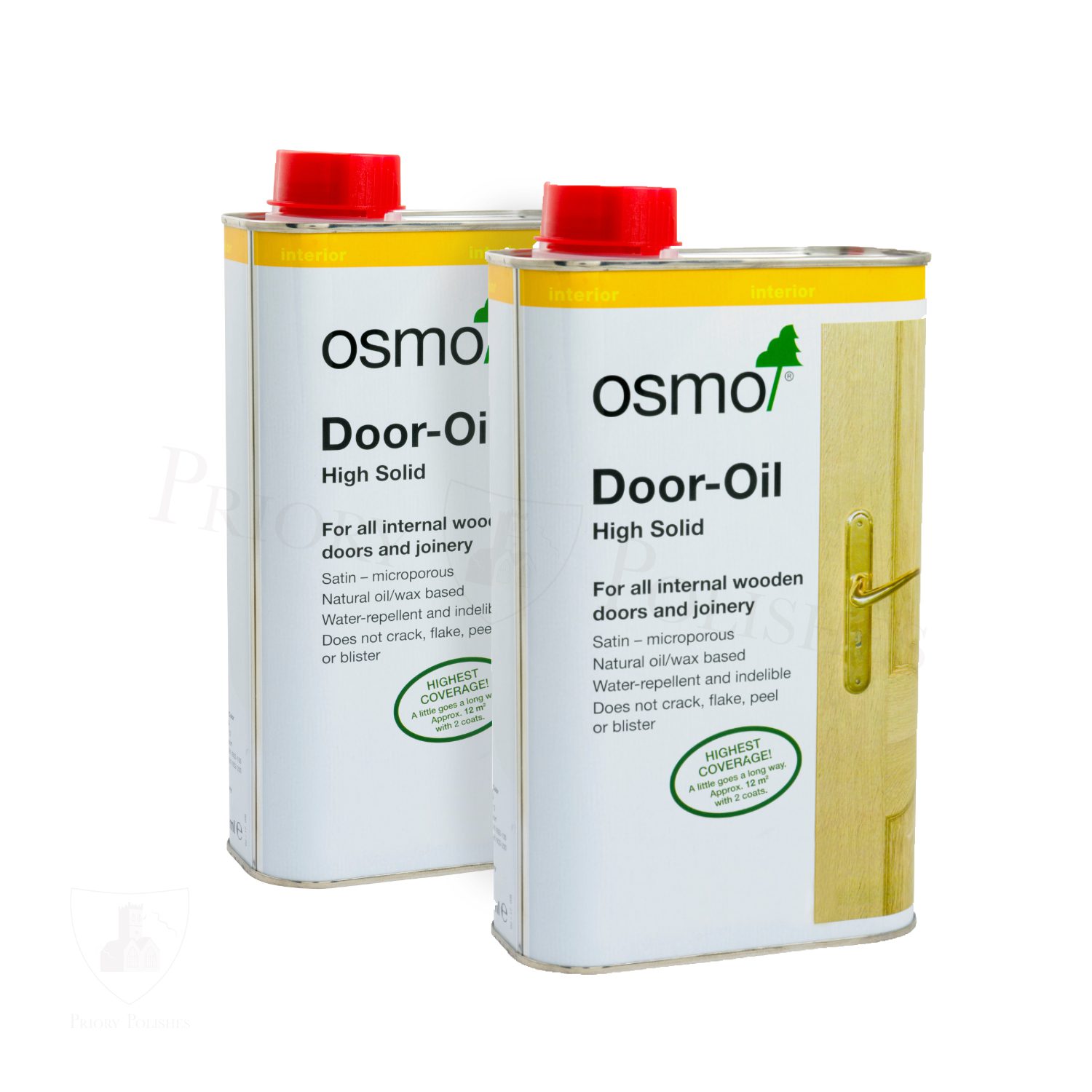
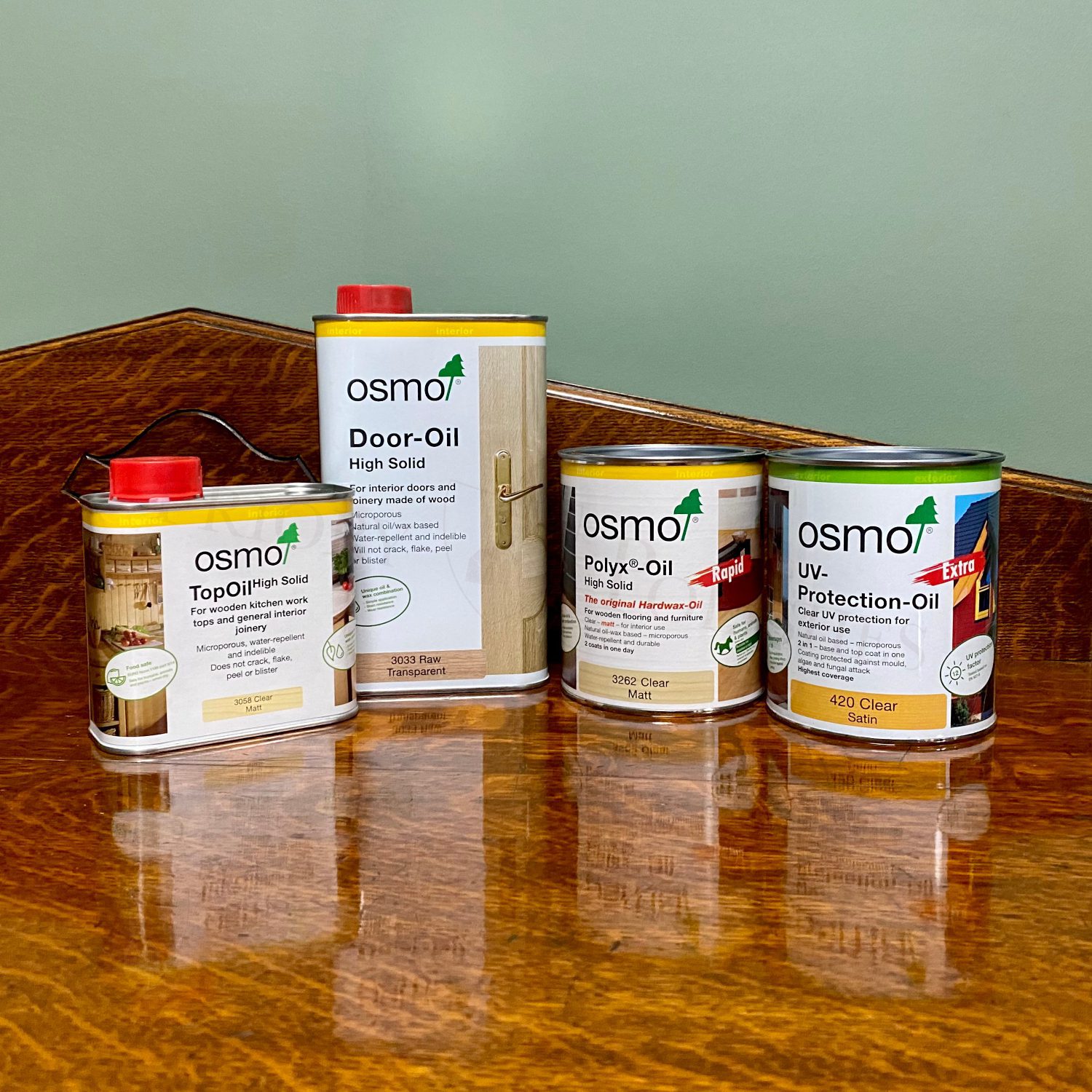
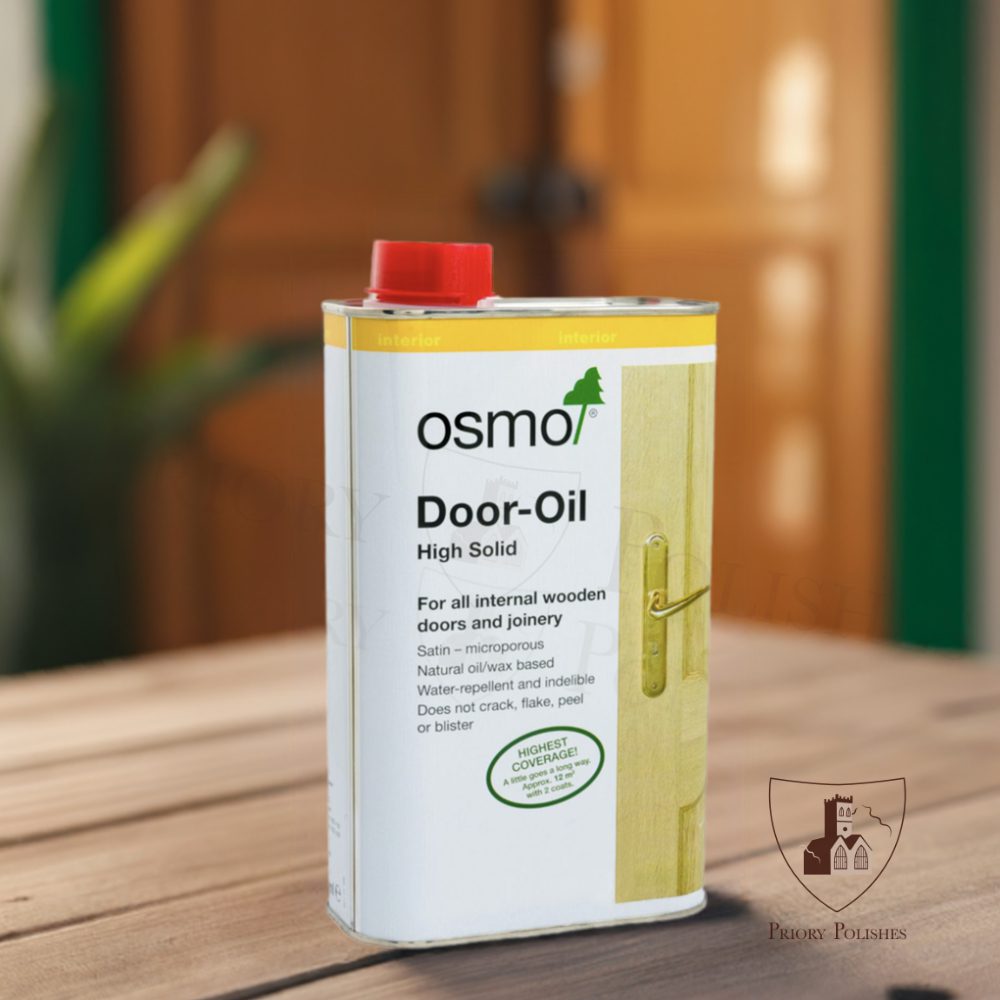


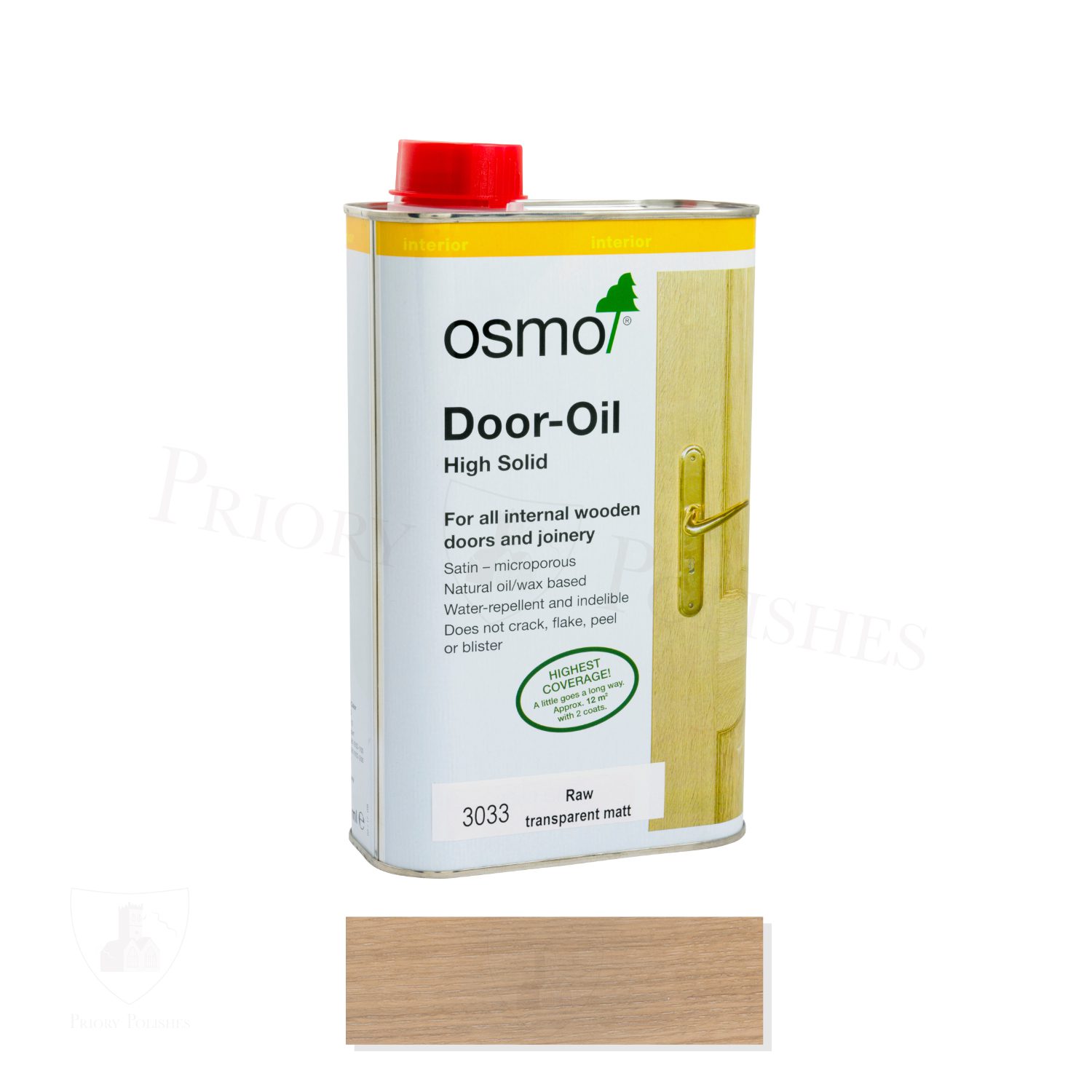
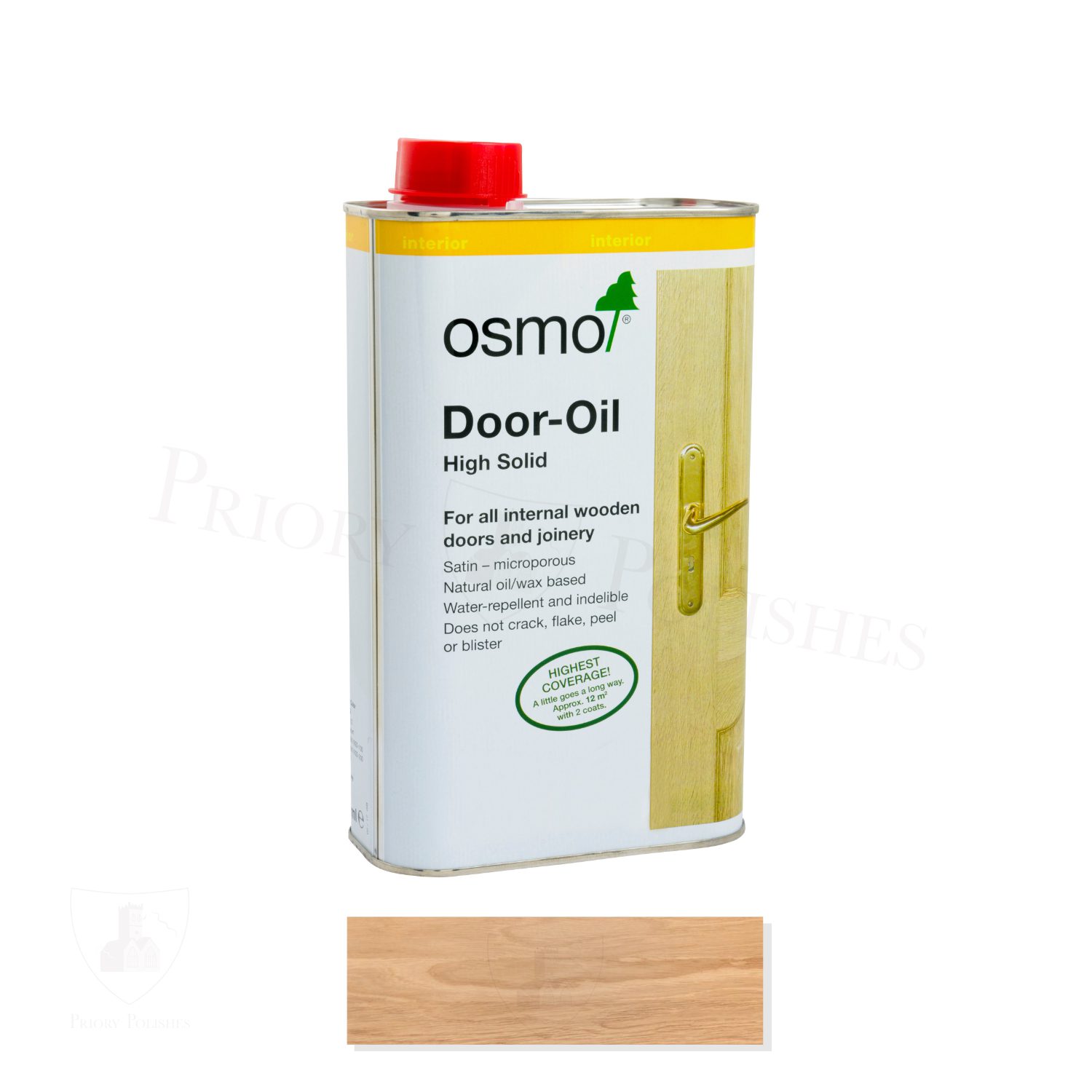

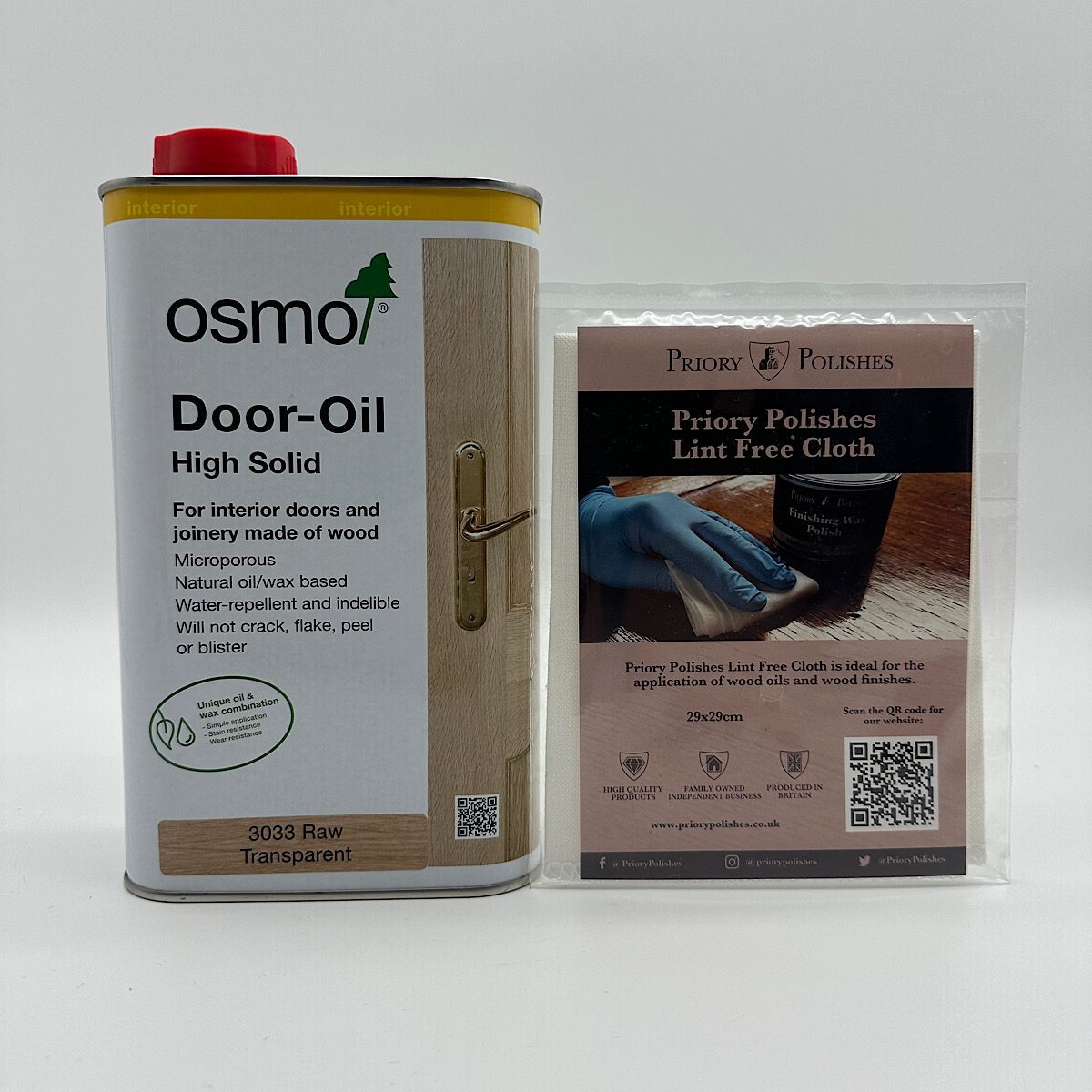
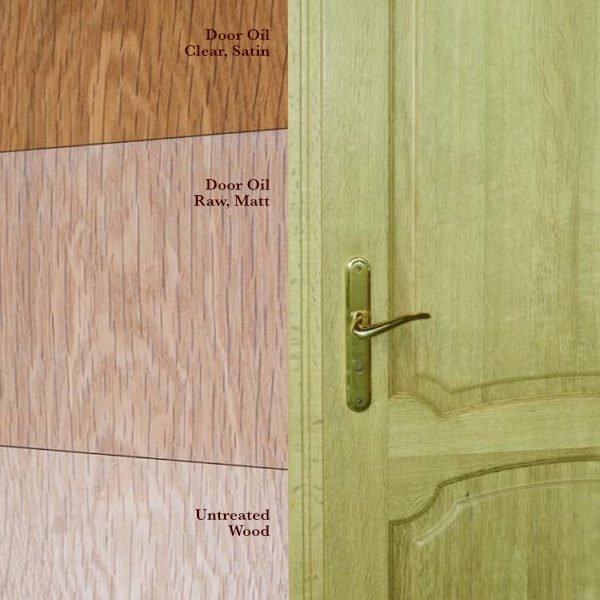


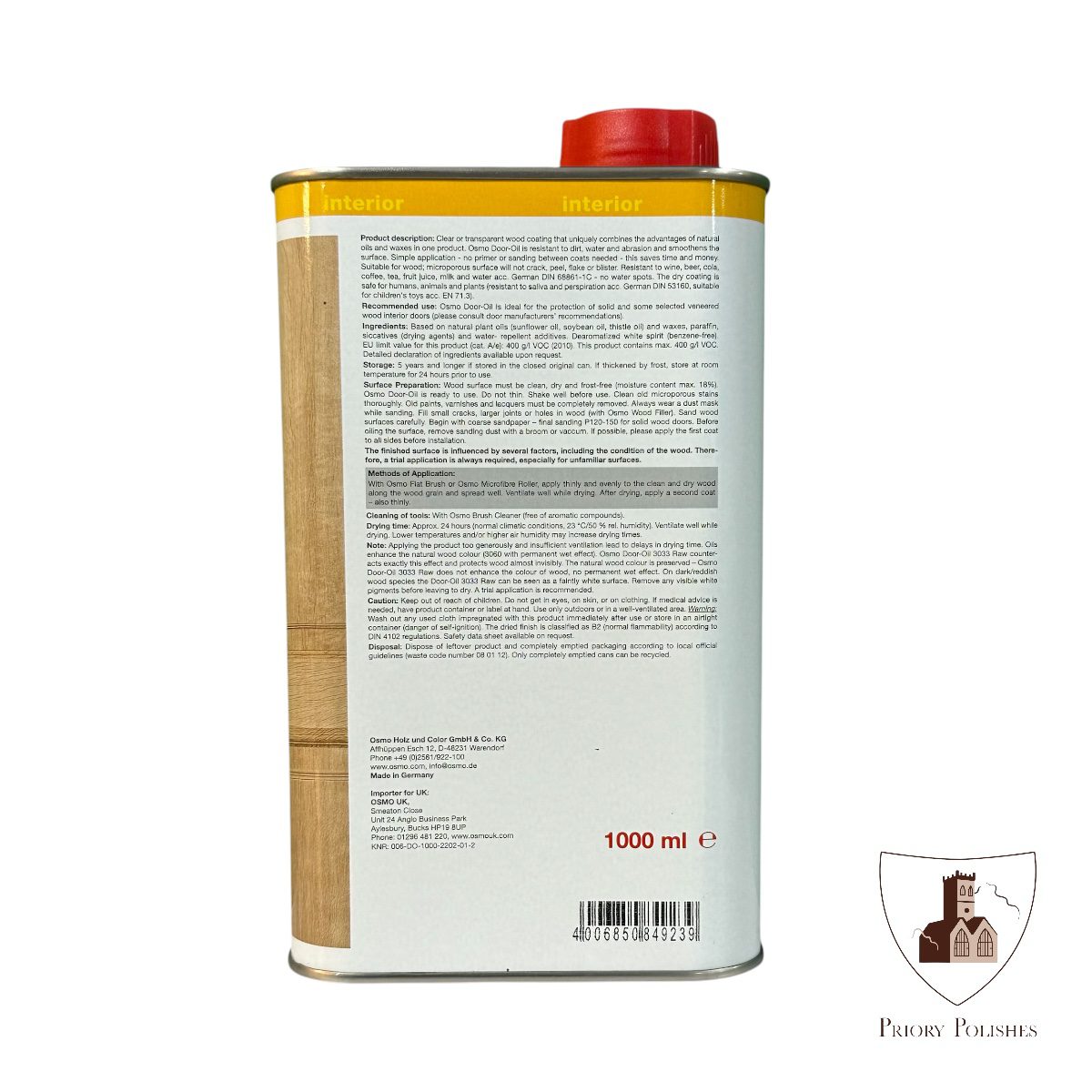




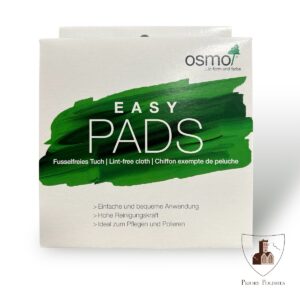
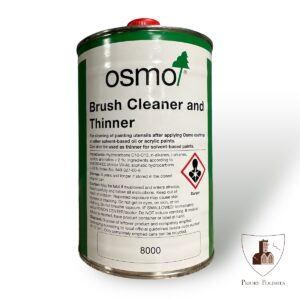
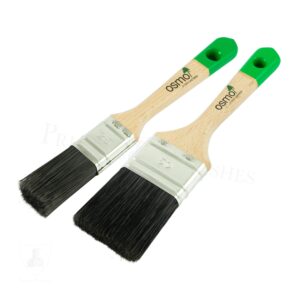
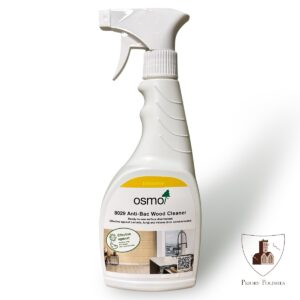
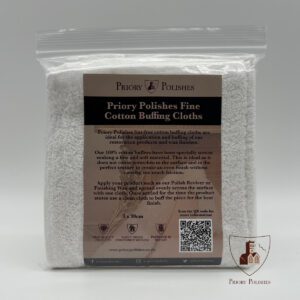
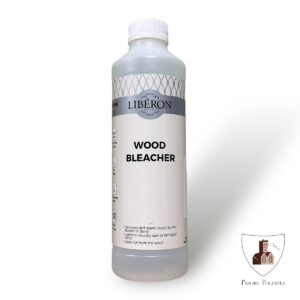
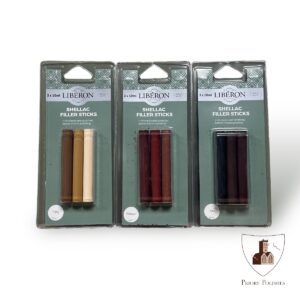
Christine (verified owner) –
Goes on easily, use sparingly.
Anonymous (verified owner) –
Arrived in great time, well packaged and good price! Will definitely buy from here again!
Paul (verified owner) –
Excellent product and very competitive price. Your website was very helpful and informative. Oak doors definitely enhanced with this product. Thank you.